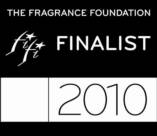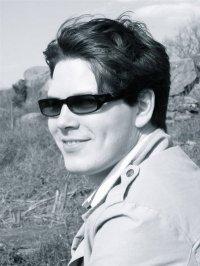Mark David: Mr. Edwards, your work is amongst the most valued in the Industry,
can you tell me how you got started?
MICHAEL EDWARDS:
Like most good things in life, it starts by accident. It’s quite remarkable how most things are accidental.
In the 1960’s, I was part of the product manager generation, working for global multinationals. Problem was, as soon as you come out with a new active ingredient in the toiletry product, competition in months would better or beat it. We had started knowing very little about fragrance, we’d start to become intrigued by the power of perfume, because we realized that if you change a perfume in a toiletry product, you could often change people’s perception about its performance without anything else, I mean, it is magical. But, having said that, I knew nothing about perfume back then, I was intrigued, but for me like most people, it was just a jumble of smells.
Then, in 1975, I went to a workshop by Firmenich, the great oil company, and they had a guide called the Bouquet de la Parfumerie. They stopped it 3 years later in 1978 because it was very technical. And looking back, I don’t think I really understood more than 5 or 10 percent of it, but it grouped fragrances by family and then by groups. And I would take it into stores and I would smell. It took an enormous amount
of time.
"In extracting the oils, the angels take their share."
-Michael Edwards
The Perfume Magazine
Exclusive interview with Michael Edwards
Fragrance Expert and Author of "Fragrances Of The World"
By Mark David Boberick
All rights reserved 2006-2010. All content belongs to Sniffapalooza Magazine. Articles, reviews and interveiws may be archived for permanent use on the web site for Sniffapalooza Magazine and for future issues.
All articles remain the property of Sniffapalooza Magazine for display purposes only. Sniffapalooza Magazine is independently owned and operated by Raphaella Barkley.
Sniffapalooza Magazine and Raphaella Brescia Barkley has exclusive permission and licence agreement
to use the copyright and trade mark of Sniffapalooza.com for the purpose of producing Sniffapalooza Magazine.
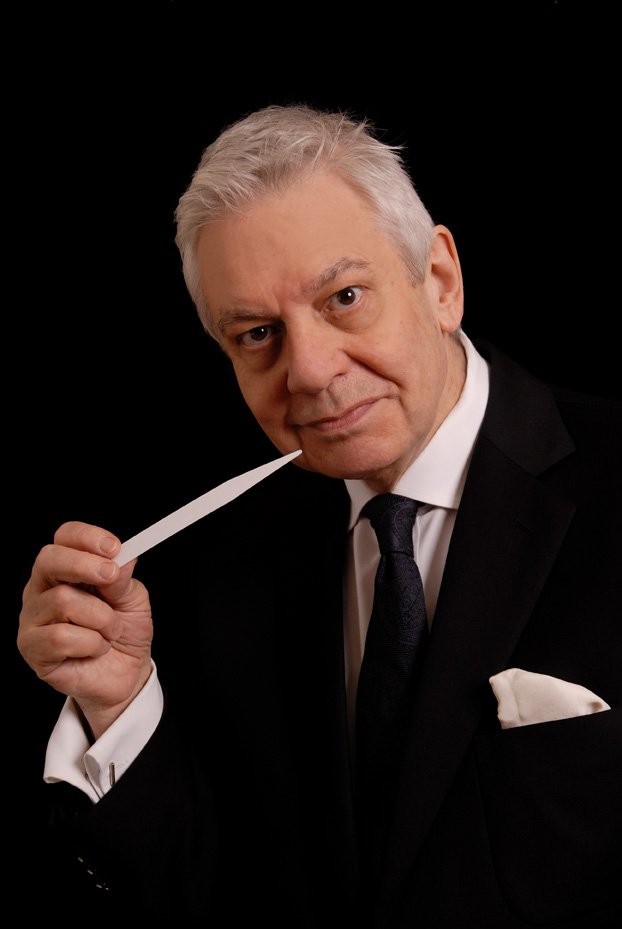
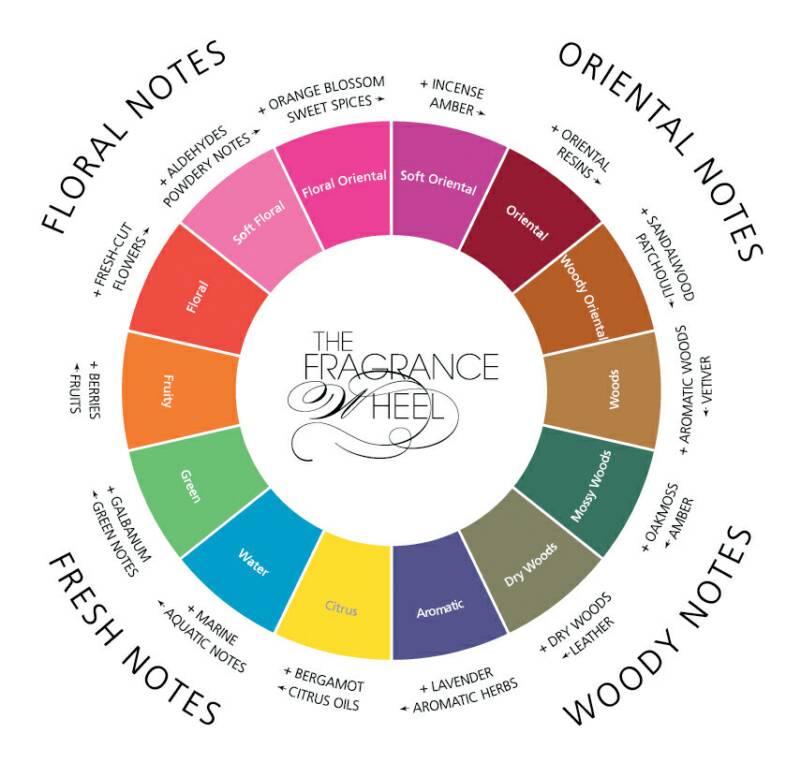
Images courtesy of Perfumes Of The World with permission. All rights reserved 2010. No part of this interview is to be used without
Website's and fragrance blogs may add a link referring to this article and is welcomed.
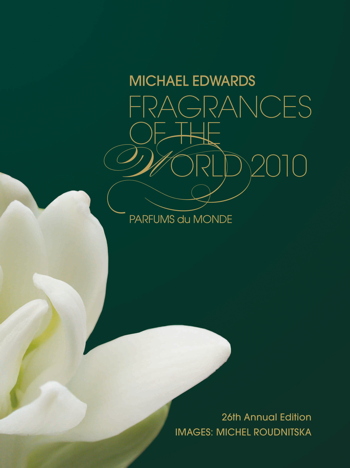
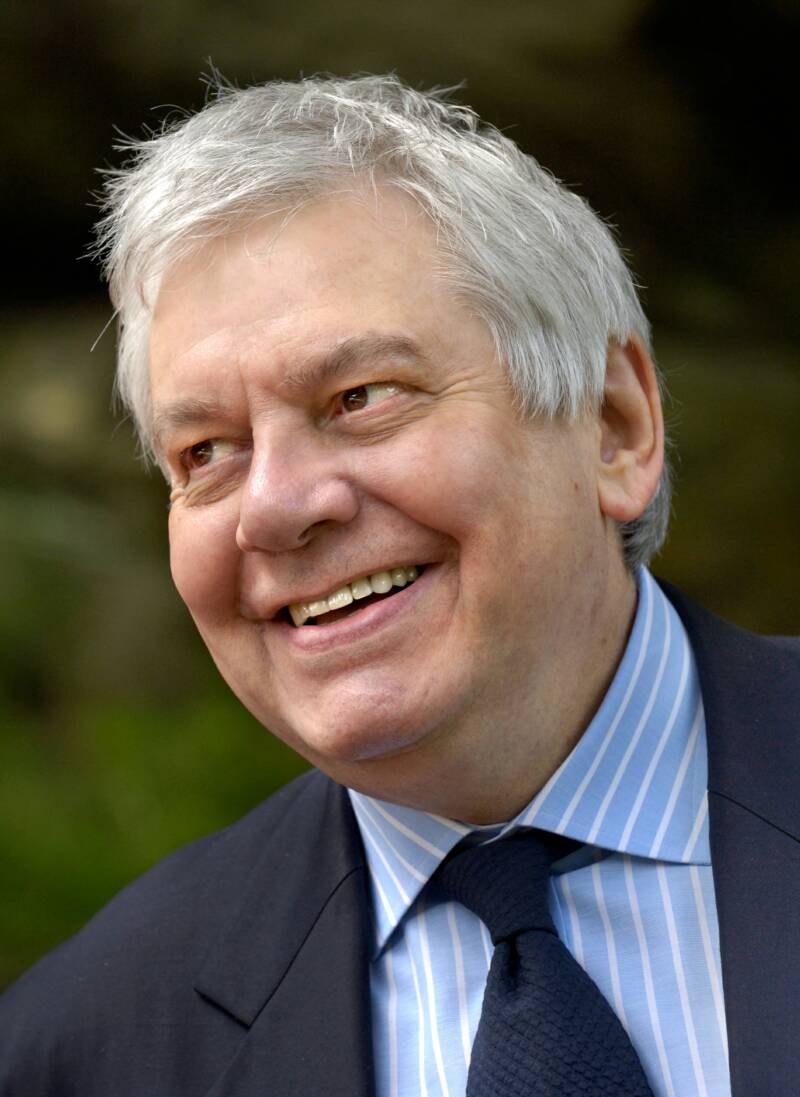
In 1984, Michael Edwards changed the Perfume Industry when he launched Fragrances of the World, a guide that classified perfumes. Updated yearly, it would grow to be a vital resource for perfume retailers the world over. Today, Edwards’ body of work includes the “Fragrance Bible” which is in its 26th edition and lists over 7000 fragrances as well as the Fragrance Database which lists just about every detail one could want to know about a fragrance. Edwards is the author of both Fragrances of the World and Perfume Legends: French Feminine Fragrances, the cult book and collectors item that opened up the secret world of perfume. Perfumers spoke openly about their creations and the sources of their inspiration, for the very first time, because of his influence.
According to the Fragrance Foundation, Michael Edwards has become the "perfume experts' expert." He was recognized by two FiFi awards for his contributions to the fragrance industry and his annual Fragrances of the World guidebook and his Fragrances of the World.Info database are considered the world's most comprehensive references for professionals, retailers and fragrance lovers alike.
It was a great honor to spend the day with Michael Edwards, to interview him and finally, to present to you; through The Perfume Magazine, this rare interview. You can also view his Fragrance Wheel below. Raphaella Barkley; Editor of Sniffapalooza Magazine (see Editors Note) and I sat down with Michael in New York City several months ago for the following interview.
-Mark David Boberick
EDITORS NOTE:
Michael Edwards is the most diligent and focused man I may have ever met. Mark David and I met Michael early in the morning before his workshop and helped him set up. To be in the presence of this great man and take in all that he has to say, was nothing short of amazing. He was expert, poetic, romantic. He wove perfume revelations to us, telling his secrets as we sat in rapt attention and wonderment.
He was a “magical alchemist” who shared his soul with us for a few short hours.
During the day he didn't seem to stop once to catch his breath. He is the epitome of class and exudes warmth and a caring attitude. He is the consummate professional and the absolute best in his field. His great dignity only heightened his magnetism and one could not help but have the highest respect for him and for his vast unlimited knowledge.
Regretfully, we did not have time to ask all of the questions that we had prepared for the interview. Special thanks to Mark David for accompanying me during the day, for the great job of editing the text of this interview, conducting the interview and for helping with set-up prior to the workshop. Also, my thanks go out to Mark for being my great friend. A special thanks to Dr. Vida Skandalakis. The day we shared with friends will always be with me. A special “thank you” as well to Joe Garces, President of Robert Piguet, for his generosity in all that he does. I also would like to thank Global Fragrance Expert, Marian Bendeth of Sixth Scents for contributing the opening statement about Michael Edwards. Thanks to Sniffapalooza.com for hosting the event.
And finally, thank you Mr. Edwards for allowing us to do this interview and for giving us so much time out of your busy life.
-Raphaella
MARK DAVID: When a fragrance is discontinued, is it then automatically pulled from the next guidebook?
MICHAEL EDWARDS:
No, not at all.
MARK DAVID: So, I can still find for instance, Guerlain’s Coriolan?
MICHAEL EDWARDS:
With mass-market, I leave them in the guidebook for 2-3 years and then we check to see if they are still coming up regularly on search engines. If they are, they are left there. Prestige fragrances tend to get left for a lot longer. Take for instance Catherine Deneuve. It was introduced in 1986, it is still in the guidebook marked “D” for discontinued. We tried pulling it 4 years ago and, within the space of a couple months got over 40 messages telling us to put it back. We asked why and they said because they were still getting women who were coming to the counters and saying that they used it or still use it. And if you don’t have fragrances like that in there, it becomes difficult to give the customer a proper replacement. So we leave them in the guidebook. All discontinued fragrances remain in the database, though.
MARK DAVID: Perfume is so subjective to the wearer. When you are classifying a fragrance, do you specifically rely on tester strips? How does this work? Because I could wear Chanel No. 5 and it could smell entirely different on me than if you wore it.
MICHAEL EDWARDS:
True, but if you wore any other aldehyde, it would have the same effect on you.
A Floral-Oriental would smell on you the same way another one would – there’d be a basic character. So, like wine, where it is determined by the grapes, the classification of fragrance is determined by the ingredients.
Now, in putting those ingredients together, you can come up with a mixture of everything and that’s horrendous, so it probably won’t work. So most of the perfumers will start with one idea or a mix of 2- 4 materials and that’s the Heart. I remember Sylvaine Delacourte of Guerlain was once asked the question “How do you come up with a new accord?” And she said “That’s tough, we’ve got all of these materials – but to put two or three together in a way that moves you – that’s difficult.”
It’s like an artist. Why does one artist come up with a painting and has a signature and we say “yes” and another artist does something and it falls flat? For me, great perfumery like any art, like any story, like any newspaper is not a mixture of everything. It is usually one idea expressed by an interesting mixture of 2, 3, or 4 ingredients. Go 5 and you get into problems. Once you’ve got that core, you then dress it up to be fresh to start with and then add something at the bottom and that’s perfumery. So, you can really reckon that 95% of perfumes have got a pretty definite character. A Fruity-Floral is a Fruity-Floral is a Fruity-Floral. And there might be some difference in ingredients, but it’s still a Fruity-Floral.
MARK DAVID: What if we take a fragrance like Mona di Orios’s Lux (2006). I find Lux to be incredibly unique, nothing else like it. The first part of the fragrance is citrus…
MICHAEL EDWARDS: Yes, but I only classify on the dry-down.
MARK DAVID: OK, but with Lux, the citrus lasts for a very long time with no traces of the incense dry-down to come. It is as if the fragrance is bi-polar.
And I think to myself - what an incredible fragrance. Now, while I don’t myself wear it, I admire the composition due to the skill with which I know the fragrance was made.
MICHAEL EDWARDS:
I agree, and so I give it the subcategory of Citrus. Because I’ve got the basis in there which is the family and then I’ve got the accent – is it green? Or a white flower? Or is it citrus? But I only ever classify based solely on the dry-down. With Lux, Mona sent it to me to evaluate. I then went back to her, we spoke over the phone, and we checked the fragrance. I try very hard to check with the perfumers and with the evaluators. So when a fragrance comes out, I check it with the brand and we’ll try to come up with a classification. If a fragrance is really interesting, I’ll check it with all of them - Firmenich, Robertet, etc. And by the time you get all of these evaluations, you’re starting to really understand the fragrance.
MARK DAVID: How often do you get a company saying “We don’t agree with this?”
MICHAEL EDWARDS:
Oh, quite often. I’m really happy to go back and re-evaluate. A classic case is Sensuous (2008) by Estee Lauder. My first evaluation was Woody-Oriental. My second evaluation was Woody-Oriental. A friend said “It’s more Woody.” So, I set about trying to understand it – I started at Shiseido Feminite du Bois (1992), added sandalwood notes, and came back to the staff. Three perfumers said Woody-Oriental, four said Woody. So frankly, it’s one of those - it’s on the edge. You could put it in either one. At the end, I said we’ll put it in the Woody category because I really couldn’t tell. But if there’s a really clear case where someone disagrees with me, I will evaluate with them and I will evaluate with their perfumers. After all of that, if there is still disagreement, I will give it to Guy Robert and tell him to make the decision.
MARK DAVID: So Guy Robert is your final word?
MICHAEL EDWARDS:
My final word. And rarely do I have to do that, I mean my job is to try to understand, and I work under the assumption that if they question it,
maybe I haven’t understood it. So I’m not defensive about the classifications.
MARK DAVID: I want to talk a little bit about synthetic perfumes. You have said that “synthetics are the building blocks of modern perfumery.” A lot of people have misconceptions about synthetics. You’ll have customers going into department stores demanding “natural” thinking that it’s the best thing for them. And perhaps it is if following a more organic lifestyle is important to them. But talk to me about this mystique behind synthetics.
MICHAEL EDWARDS:
There’s no mystique, they are just magical notes. Think of it as a musical event. It doesn’t really matter where the note comes from; it’s the effect that it gives you. Until Guerlain's Jicky in 1889, the perfumers were obsessed with trying to recreate the scent of nature and say, roses. Jicky for us was the first modern perfume, it used a splash of synthetic notes and when Aimé Guerlain was asked why, he said “Because it gave me an effect I couldn’t find in nature.” And that’s the key. I love naturals, but if you forced a perfumer to use only naturals, the result would be very boring. We’ve all been in gardens. The problem is that many of the natural materials, when you actually get them, they don’t have the magic that is in the fresh scent of the garden.
In extracting the oils, the angels take their share. And so you only get part of what you smell. In some cases, there are natural materials that we cannot use – lily of the valley, for instance. You could fill a room with lily of the valley flowers, but all the oil that would come out would maybe be a drop and you couldn’t use it – it’s poisonous. So if you want to get the scent of those lovely little flowers, you have to create them with synthetics. The synthetic notes for us are the building blocks - the maestros of 20th Century perfumery. The evolution of great perfumery is in fact the evolution of the synthetic notes, 95% of which come from nature. Take the aldehydes – you’ll find them in citrus oil, you’ll find them in rose oil. So why do we recreate them synthetically? Because they are available naturally in such trace amounts that commercially you can’t extract them. You could pull apart jasmine and you would get over 800 different chemicals that nature has put together to create the scent that we smell as jasmine. Each one of them has probably a different scent. Some are nice, some are not so nice, but now we have a whole new organ of scents to use out of that. And so really, the evolution of perfumery lies in the researchers identifying their components.
Take a rose scent – if I gave you a rose scent that came from nature, you would find it flat and uninteresting because you now have become attuned to a new generation of aroma chemicals which clone the heart of the Rosa Damascena: The Damascones. They were pioneered in The Perfumer’s Workshop’s Tea Rose in 1972, for example, then again in Guerlain’s Nahema in 1979 and then they formed the heart and the inspiration of Yves Saint Laurent’s Paris in 1983. Give you a rose fragrance now and if it weren’t supported by those damascones, you would find it very flat.
I don’t see that there is any great distinction between natural or synthetic. Natural is not better than synthetic and synthetic is not better than natural – it’s the final effect. It’s like a painter – you don’t argue whether a painter should use one particular shade of blue instead of another – you look for the final effect of it. And so, when I look at a perfume, I want to see what the final effect is. For me, a great perfume almost invariably will contain both natural and synthetics. The synthetics are the skeleton; the naturals are the body of fine fragrances.
Thank you very much, Mr. Edwards.
I also wish to thank several people who made this interview possible. First and foremost, Raphaella Barkley who gives her heart and soul to Sniffapalooza Magazine and who assisted with this interview and Mr. Joseph Garces, who allowed us to conduct the interview at his SpaFumerie in New York City.
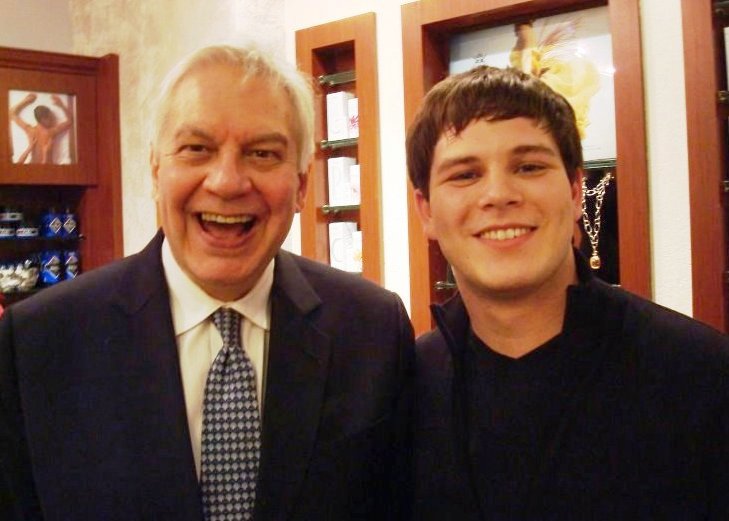
Michael Edwards and Mark David Boberick
"My first recollection of meeting Fragrance Author/Expert, Michael Edwards will forever be etched in my memory like a beautiful Lanvin stopper. The year was 1998 and we went to a luncheon in some lovely cafe in Cannes, France during the World Tax Free Show. I recall a tall tanned and elegant Gentleman in an off-white linen suit striding towards me. As we began our journey on scents, his lilting and gentle English accent effortlessly glided across scent names and history like an Olympic skater, his pirouettes: precious nuggets of fascinating information that only a select few would know. It was magic and anyone who is fortunate to hear him will also be enraptured.
Michael Edwards' Award-winning contributions and knowledge of perfumes are limitless.
As an author, his language and phenomenal attention to detail is breathtaking.
His classifications, spellbinding to those who seek out the truth with facts and integrity.
His passion and authoritative joie de vivre, utterly infectious.
A living legend, Michael Edwards is without question, the most recognizable and highly accredited Fragrance Expert to date. His story is remarkable and his knowledge? well, see for yourself:"
- Marian Bendeth; Global Fragrance Expert, Sixth Scents
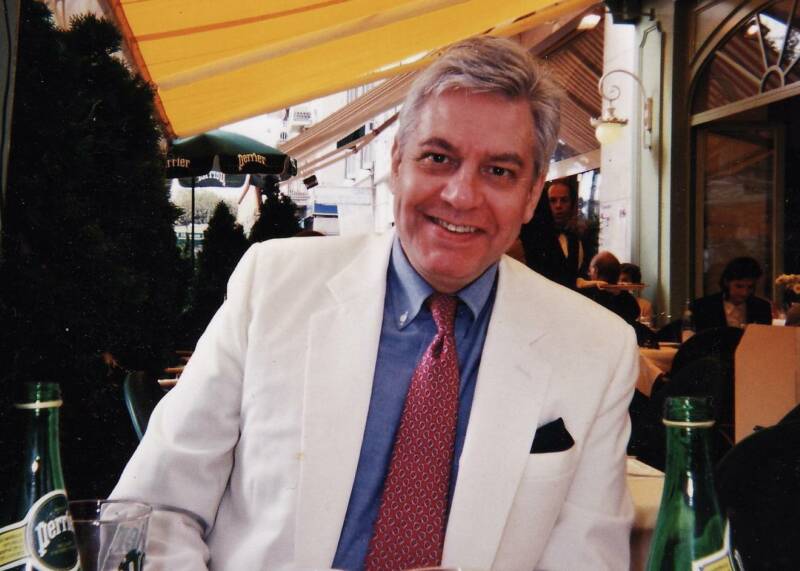
Michael Edwards in Cannes
Image courtesy of Marian Bendeth
It was about that time that I moved to the Prestige business working for Halston. I was based in Paris and I had a very wide portfolio of fragrances, although it was Halston, they also had Orlane and Missoni and brands like that. And then, as now, the sales associates tended to sell the perfumes they liked and all the new ones they’d hold back. And I thought, wouldn’t it make sense if perhaps we gave them a guide to help them take a “step back” from their likes and dislikes? Remember, there was no general guide available then. I asked Firmenich if perhaps they would allow me to update their guide with their help: resurrect it and use it. And they did, and I “put it out there” and it worked. And then fragrances that were dead started to sell. I remember in 1983, I was asked to go to Australia to work on the company that put together Max Factor and Orlane and I’d been there 2 months already and suddenly, the company in America, (it was part of one of those great conglomerates that owned Halston, Orlane, Missoni and Heinz Ketchup and Avis and don’t ask me how it was all put together. Anyhow, it all fell in) was bought by another company and here I was stuck in Australia with a corporate culture that I knew nothing about! And I thought about what I wanted to do and I decided “I’m going on my own.” So I started doing training in Australia and in the Pacific for major brands and I needed a guidebook and I asked Firmenich if they would let me use theirs and of course they said no. So it forced me to do it on my own.
I put together this tiny little book; the first one had 323 fragrances - just women’s. Then I had good luck. In 1988, Nordstrom somehow got a hold of the copy and said that they liked it and asked me if I could somehow add American fragrances and so I did. And looking back, I never realized in my naivety that once you have major retailers like that, they’re going to say “Add this, add this, and add this.” So in 1991, Nordstrom asked if I could add men’s fragrances because it was only women’s and as you know, 80% of customers in major department stores are women. Looking at the men’s one, I did something which was so simple to me but nobody else had done it – I matched women’s and men’s because for me, most women tend to have very little confidence in the fragrance judgment of the men in their lives and so they would buy the fragrances that they liked. So if they like a Woody-Oriental? Great! Here are the matching Woody-Orientals for men.
And it worked. Nordstrom reported that their sales had increased around 20% from the “If you like this, then try that” matching that the book provided. And then in 1998, Nordstrom asked if I would put in Niche fragrances because they wanted to put Annick Goutal into their South Coast Plaza location. She [Annick] was ill, so I worked with her perfumer, Isabelle Doyen, that was the start of it and then somebody else asked if I would do the same thing with L’Artisan Parfumeur. I wrote the president Marie Dumont
in Paris, (who’d never heard of me from Adam) I explained what I wanted and she said “Fine, work with my evaluator Pamela Roberts,” and the rest was history.
To this day, I still don’t know why no one else classifies Niche, but no one does. I guess there are so many of them that now it’s easier for people to leave it up to me than to do it themselves. Of course, the big problem I faced right from the beginning was that any one of the major brands could go into the store, pick up my book and say “That’s a load of nonsense, I disagree.” And so that forced me to check it. Now, again, nobody else was doing it. And at first, the brands were reluctant but then we became friends.
MARK DAVID: Now, at this time, did you have the present fragrance wheel in place?
MICHAEL EDWARDS:
Yes, yes it essentially was. I refined the wheel, and interpreted it graphically around 1998. But really, the construction of the book, the Florals and the Orientals were already there. The Woody-Orientals were added in the late 80s, Water came in the 1990s, and Fruity came in more recently. The Fougeres in the middle of the book date from Nordstrom looking for the universal men’s family. It was really all there. And the basic idea of Fresh, Crisp, Classical, Rich was born in 1984 and that was really what made the whole book.
Now, the issue of checking it - in order to let me check it, I had to be impartial so to this day we make no charge for listing any brand. We don’t accept advertising, there is no payment for being on the front cover or having a photograph featured, we don’t accept consulting, and, you know, I wish I could but, the up side is, I can work with every brand and every perfumer.
So, essentially, I think the book evolved because my work comes from retailers, and the retailers were constantly saying “Add this.” The sheer number of retailers who use it range from Nordstrom, to Harvey Nichols in London, to people like Fred Segal in Los Angeles – a wide range. So there were so many people saying “Add this” that eventually, I ended up with the most comprehensive listing. I then turned that into an online database (www.fragrancesoftheworld.info) for which I won my first FiFi Award in 2004 for Technological Breakthrough, and that now has become what one of the oil houses christened “The Memory of the Industry.” In the guidebook, we have the fragrance name, the brand, the year it came out, the gender, and the classification. In the online database, we add the corporate group that it comes from, the web link, the country it comes from, the date it was launched, the bottle image, the creative director of the company, the perfumer, the oil designer, the bottle designer, and the complete pyramid. You can sort this database in so many different ways – by distribution, by brand, by niche, by limited editions, by flankers, by concepts, by celebrity artists – whatever it is. But the heart of it is the most marvelous search wizard that a computer guru made for me.
So if you want to find out which flankers Francis Kurkdjian of Takasago created for American companies between 1998 and 2008 you just “click click” and it all comes up! So, whenever you hear data on a fragrance - that is where it comes from. It’s a professional one, and so my subscribers would include Chandler Burr and Luca Turin, they would also include all of the oil houses – Firmenich, Givaudan, etc - they have their subscriptions for the research, the evaluation, the marketing, and the perfumers. So, my job really has now become to provide the information for the industry. That is why I say that I’m a “backroom boy” because in effect, I produce professional tools.
Yes, they have a use of consumers (the data in the database is used to drive and create the fragrance finder for sephora.com and worlddutyfree.com) but my essential job is to keep the industry in touch with what is happening. And because I’ve worked with the retailers, I’m getting information from all over. So somebody at Firmenich would know all of the major American and European launches, but would they know for example, what Fred Segal has introduced? Would they know what’s happening in Brazil? Or Barcelona? My job is to do that.
MARK DAVID: Now, this past year, over 800 fragrances have been released, does the industry send you every single one or do you have to search for them?
MICHAEL EDWARDS:
Oh I wish they would! Wouldn’t life be marvelous? No, it’s not that they don’t mean to, it’s just that people are busy. Some companies do it marvelously. Procter and Gamble are religious - they brief me 6 months ahead of time, they send me stuff, everything’s prepared – it’s gorgeous. I went into Estee Lauder yesterday and they were so marvelous – they had everything prepared – top notes, heart notes, base notes. But we don’t expect people to tell us, that is why I go to CosmoProf every year in Bologna, and the tax-free shows in Cannes and Singapore. Between those 3 events and meetings with over 60 different groups, we get up to date, and we check what has been discontinued and we can get the new samples. At the same time, we have pretty good intelligence. If somebody gives an interview and happens to mention that they’re coming out with a new fragrance next year, we probably pick it up. And then my staff will then email them and ask them to send us the stuff. I wish they would automatically send it to us, but they don’t. That is why I live between Sydney, where my company remains, Paris, and New York. I’m just a gypsy, really.
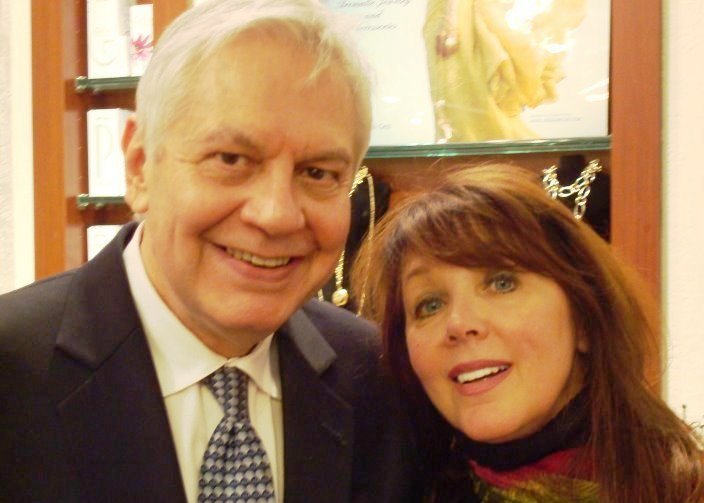
Michael Edwards and Raphaella Barkley
MARK DAVID BOBERICK - "MD" (Editor of The State Of Perfumery.com) is an Interior Designer and self-proclaimed Perfume Enthusiast who has been in love with scent for as long as he can remember and has been collecting fragrances since the age of 12. Mark has written extensively on perfume, especially for Sniffapalooza Magazine and has been published in Men's Health Australia. In 2009, MD conducted the first of what has become an in-demand workshop entitled "The Poetry of Perfume" in which he familiarizes his guests with perfume history and composition, and introduces them to many different perfumes from the classics to the niche and obscure. A lover of art and music, MD frequents museums, theatre, and the opera. He is the first person in over 10 years to interview global fragrance expert and author, Fragrances of the World, Michael Edwards. He is also an accomplished theatrical set designer having already amassed a large portfolio of work for only being 25 years old. MD is an avid supporter of Nationwide Greyhound Rescue programs and adopted his 8-year old retired racer in 2009. MD currently resides in Cape May County, NJ.
This is Mark David Boberick's first nomination for the Fragrance Foundation's 2010 FIFI TOP FIVE FINALIST- EDITORIAL EXCELLENCE IN FRAGRANCE COVERAGE FOR A BLOG for Sniffapalooza Magazine.com
